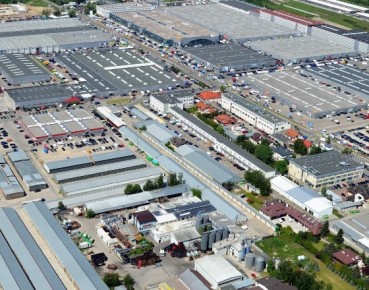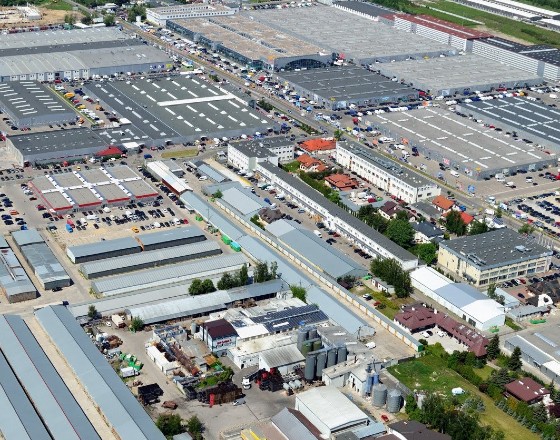Tydzień w gospodarce
Category: Trendy gospodarcze

Wholesale center, Wólka Kosowska, Poland (CentrumWolka.com, Public domain)
Vietnamese make up the largest minority in Poland, after Ukrainians, Germans, and Belarussians, with 11,718 holding permanent residency permits, though the number is likely higher as it does not include people of Vietnamese heritage, those applying for or holding Polish citizenship or people on work permits. The Vietnamese embassy and Vietnamese community leaders in Poland estimate that about 20,000 to 30,000 Vietnamese people may live in Poland, while the Polish government in 2002 put the upper possible range at about 50,000. The Vietnamese-Polish population is concentrated in Warsaw.
Bilateral trade between Poland and Vietnam passed EUR920m last year and the figure is forecast to rise further. Vietnam’s export turnover to Poland averaged at 27 per cent during 2010-2017, hitting EUR868m in 2019, a y/y rise of 29.8 per cent. Vietnam mainly exports electronics and equipment, footwear, textiles and agricultural goods such as coffee, pepper, coconut and cashews to Poland. Poland imports a lot of rice, fruit and oil products from other countries but very little from Vietnam, which is highly capable of supplying these products.
The European Parliament supported a free trade agreement with Vietnam. The EU-Vietnam agreement is the EU’s second deal with a member of the Association of Southeast Asian nations (ASEAN), after Singapore, and one of few with a developing country. Vietnamese exports of goods and services to the EU will increase by EUR15bn while EU exports to Vietnam augment by EUR8.3bn by 2035. The agreement will ultimately eliminate 99 per cent of all tariffs, although Vietnam will have a transition period of up to 10 years for some imports, such as cars. It will open up Vietnam’s services, including post, banking and shipping and public procurement markets, align some standards and protect EU food and drinks, such as French champagne or Greek feta cheese, from imitations in Vietnam.
The possible role of the expat Vietnamese is complicated, however. While the Vietnamese have taken more of a Deng Zoa Ping line with regard to market reforms, many of those Vietnamese that ended up in Poland from the late 1960s onwards were often not completely behind the regime they left behind in Hanoi and then Saigon. The Edward Gierek’s era in Poland (in the years 1970-1980), which saw an opening to the west, some market reforms and then huge crippling debt and collapse in 1980, was the period when many of the opponents of the regime in Hanoi left the country. However, following the Polish transition to a capitalist economy in 1990, Poland became a more attractive immigration destination and triggered a second, larger wave of Vietnamese immigrants to Poland. Many began as vendors in the open-air market bazaars in Warsaw selling clothes or cheap food; as of 2005, there were between 1,100 and 1,200 Vietnamese-owned stands in the area. As of 2002, in Warsaw there were an estimated 500 Vietnamese restaurants, mostly serving fast food.
The most popular location among the Asian immigrants settling in the Mazowieckie voivodship is a small village, Wólka Kosowska, near the main communication artery E77 (Gdansk–Krakow). Wólka Kosowska was the winner of Forbes economic magazine’s ranking for business attractiveness (2009) and due to its favorable location and good communication with Warsaw city center was selected by the Chinese immigrants arriving in Poland in the early 1990s as the optimum location for their newly established businesses.
The first Chinese trade hall in Wólka Kosowska (the GD company) was built in 1994 as a logistics base and warehousing for the most important imported goods market, the so-called Jarmark Europa in the old Stadium in Warsaw. Before the stadium was finally rebuilt in 2007, the Vietnamese decided to move their trade centers to Wólka Kosowska. Thus, through the co-location of the Chinese and Vietnamese trade halls in Wólka Kosowska, the country’s largest Asian wholesale and retail sale center was established. Currently the shopping mall in Wólka Kosowska occupies an area of over 50 hectares and includes 17 halls, with more than 2,200 trade pavilions. The biggest workforce is the Vietnamese, who own, or rent from Chinese and the Turks, the majority of the pavilions and trade stands. Some of the Chinese and Vietnamese merchants, who previously rented apartments in Warsaw, have decided to settle permanently in the municipality of Lesznowola, buying flats and houses in the proximity of the trade halls.



